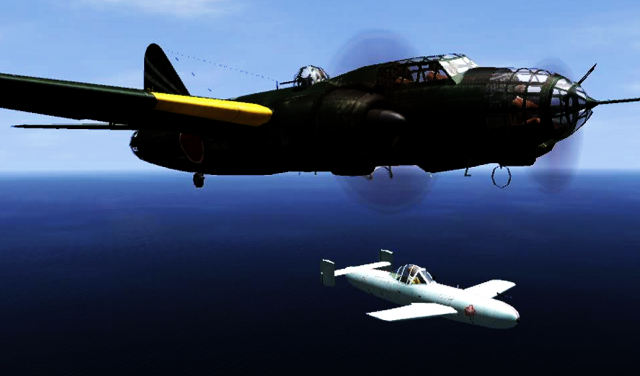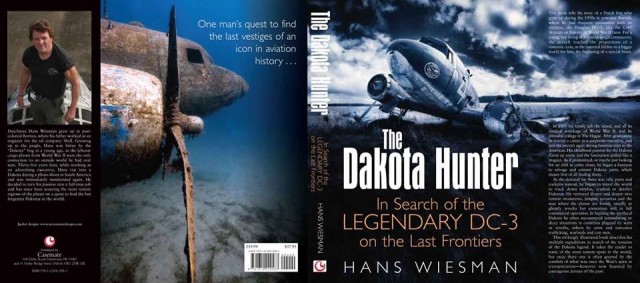Japan’s Imperial Navy developed in 1944 in all secrecy the Yokosuka MXY-7 Suicide Plane ‘Ohka’ with a large high explosives war head.
It was a flying bomb, forerunner of the modern cruise missile, while GPS guidance was replaced by a trained pilot on a ‘never come back’ mission. This Kamikaze (Divine wind) Special Attack force was not considered a suicide squad by the Japanese tradition in which it was an honor to die for the Emperor. a noble task that far surpassed the warrior’s scornful option to surrender and survive.
For its assault launch, the Ohka (Cherry Blossom or Baka Bomb) was slung half outside/ inside the bomb bay of a Mitsubishi G4M2e “Betty” bomber aircraft that carried the flying torpedo within range of its naval target. At high alt.(some 22.000+ feet), the pilot uncoupled from the mother ship and first made a glide with the small plane (5 m wingspan, 6 m length). in order to come closer by and then would fire the Ohka ’s three solid-fuel rockets in order to gain speed and flight range.
With a top horizontal speed of well over 450 mph, he could fly the missile towards the ship to destroy, seeking the lowest possible altitude and skimming over the wave tops, in order to stay out of sight of AA gunners, prowling Grumman F6F Hellcat fighters and radar.
But to improve speed and impact, in the last minute they frequently pulled the nose up in a bell shaped curve to 5000 feet, to finally make a nose dive attack on the target, capable to reach near-sonic speeds of well over 600 mph.
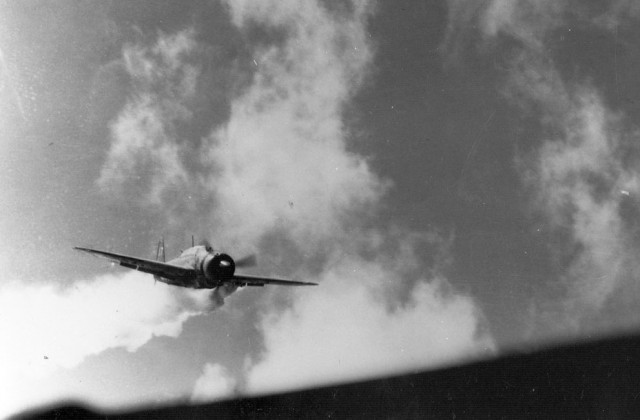
First registered naval Kamikaze aircraft attack took place on 21 Oct.1944 on HMAS Australia. The blast killed 30 sailors incl the Captain and was executed with a standard fighter Zero plane with a 250 kg bomb attached underneath. As the naval Battle of the Leyte Gulf started to develop in the following days, also Torpedo/ Dive Bomber aircraft (nicknamed Val, Judy) made suicide charges against the allied ships. Their approach speed was under 400 mph and soon the Allied Gunners and fighter pilots would be able to eliminate most of the attacking aircraft before they could inflict any damage.
Yet, 5 attacking Zero’s were targeting the US Aircraft Carriers. One (un)lucky Zero hit the carrier USS St. Lo. The bomb magazine was hit, exploded and the carrier was doomed. Seven other large and smaller escort Carriers (CVE’s) had been struck, plus 40 more Allied ships, of which 5 sunk and 23 were heavily damaged. A devastating result, but in the bigger picture it could not stop the US Navy with sublime commanders, determined crews and a fleet that consisted by wars end of more than 100 Aircraft Carriers. All those ships put in a virtual row took the shape of a Giant Boa Constrictor that was starting to strangulate Nippon’s Armed Forces while homing in on the Japanese Islands.
In that Leyte battle (believed one of the largest naval battles of all time), the Japanese lost the final ‘fine de fleur’ of most of their capital Naval Battle Ships, plus masses of aircraft and pilots, that could not be replenished in short time. Nippon in desperation started to make fatal errors how to counteract and keep the US Navy away from their next target Okinawa.
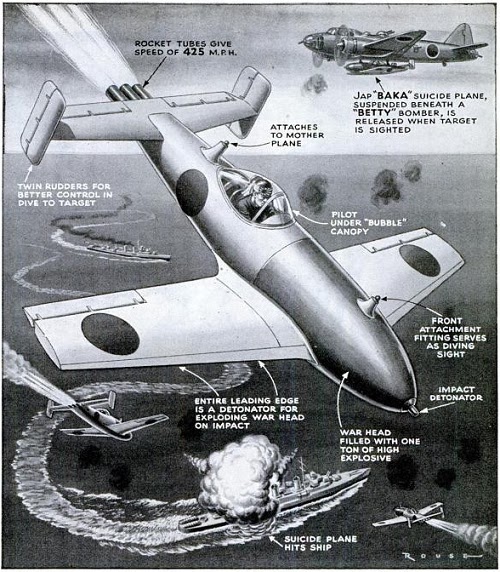
Popular Mechanics Magazine in 1945 showed this (pre- exploded!) view of the Yokosuka Ohka. The Ohka was of a different league, faster and smaller than regular airplanes with a much more destructive warhead of 1200 kilos (2650 lb). In perspective, the German V-1 and V-2 rockets had warheads of 800 kilos, Ohka’s had 50 % more Bang for less Buck, evidently excluding the cost of a pilot). The secret weapon was first planned to be deployed in the Leyte Gulf after the naval Battle from 23-26 Oct. 1944, won by the US Navy. Soon, the US troops invaded the Philippine islands, depriving the Imperial Navy of their final oil supply lines from Borneo and SE Asia. In a desperate attempt, the largest Aircraft Carrier in the world, the Shinano, sailed out in the dark from Japan’s South coast, carrying 50 Ohkas intended to attack the US Naval fleet in Leyte Gulf. But that huge vessel was not yet finished (it was in an early stage converted from Battle ship to Super Carrier, after they lost 4 Carriers in the Battle of Midway, mid 1942). The Japanese had noticed too late the turn of the tide (huge battle ships were no longer of any avail to gain superiority, as also the Germans found out) and with their losses sustained, were soon in dire need for more carriers. But it was all too few and too late, while the US Navy cranked out over a hundred Escort Carriers (CVE’s) between 1941 and 1945! Nippon’s final pride ‘Shinano’ sailed out without any escort or aircraft on deck for protection against enemy attacks. Its fate came sooner than most had figured. 10 days later, US Navy Submarine ‘Archerfish’ torpedoed the unprotected giant on 24 Nov.1944 and sent her to the bottom. Almost 1500 sailors lost their lives and a 1000 more were rescued.
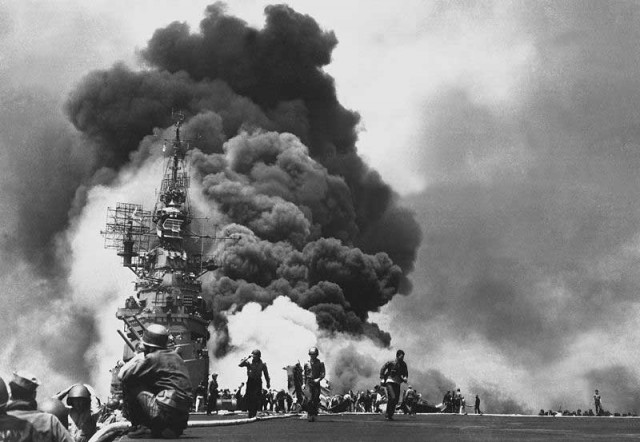
In Okinawa came the (delayed) first encounter of the US Navy with the Okha on 21 March 1944. 16 Betty Bombers with 14 Ohkas on board were picked up by radar, intercepted by US carrier fighters and all Bettys were downed while not one single Ohka could have been launched. Later, the missiles made some spectacular hits, but the US had developed already an early warning radar system with an outer ring of radar ships for protecting the Aircraft carriers. This invisible and nearly impenetrable “Dome” was highly efficient against the lower speed Betty Bomber launch platforms, becoming soon the snag in the new Japanese attack scheme. On 12 April, 9 Bettys attacked again, the destroyer Mannert.L.Abele was hit and sank. Destroyer Stanley had a weird attack from 2 Ohkas. One came in somewhat ‘over-energized”, it penetrated low in the fuselage near the bow and the warhead exited on the other side, splashing in the water. The ensuing explosion left no real damage, but 2 new portholes were made on either side of the ship, vaporizing the pilot in the process. See the short film/ animation of this attack on http://wonderfulrife.blogspot.nl/2012/11/japans-suicide-rocket-planes.html
The number of successful/deadly Ohka hits quickly dropped, while the ‘classic’ Kamikaze Zero fighters in cloudy/ overcast circumstances still could do harm to the US Fleet (lacking the cumbersome Bomber ferry flights). By Spring 1945, there were successful Zero/ Val attacks on the USS Enterprise, USS Franklin, USS Intrepid and USS Bunker Hill from where this last picture was taken on 11 May 1945. But the praised/ feared Ohka’s impact on the advancing US Navy invasion fleet was negligible, so the Japanese prepared again for new plans to stop the imminent invasion of Japan. More posts about the Japanese weapons and aircraft will follow soon in my guest blog on War History Online.
If interested, see aslo my Facebook page www.facebook.com/thedakotahunter, if pleased give it a ‘like’ and follow me on War History Online, every weekend with a new fascinating blog.
In my book I describe my passion for WWII related aircraft and the Douglas DC-3/ C-47 Dakota. Read about my global hunts since 1990 with 20+ expeditions. 250 photos and 320 pages packed with adventure and history of that aircraft
The book can be ordered at Amazon (click here)
But also at Barnes & Nobles, WHSmiths and all major book stores in USA, Canada, UK, Aus, NZ, SA etc.
For more info about the book, merchandise and photos, see also my new website: www.dc3dakotahunter.com
Read the review of my book in your favorite War History Online magazine written by Mark Barnes
https://www.warhistoryonline.com/reviews/review-dakota-hunter-mark-barnes.html
